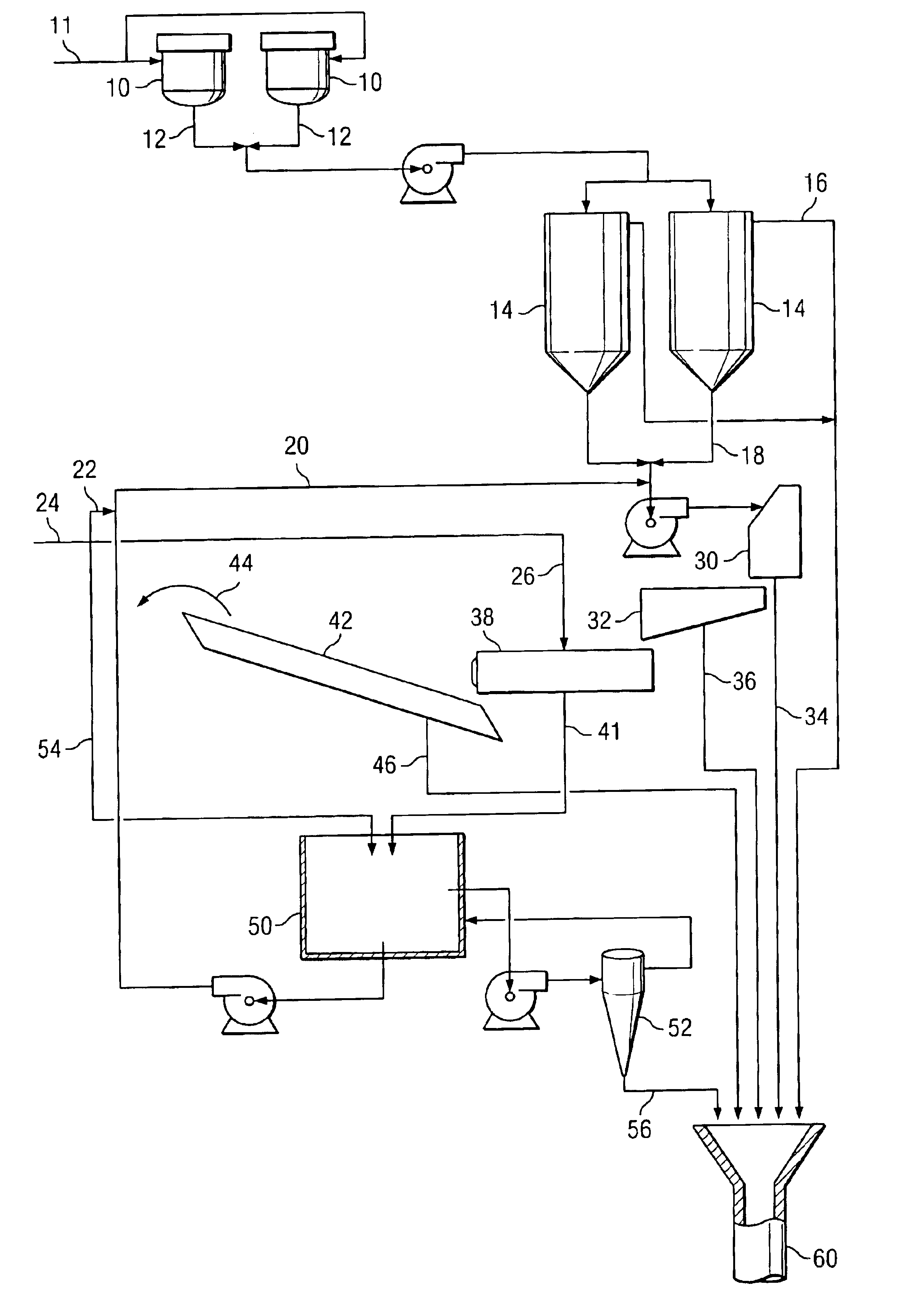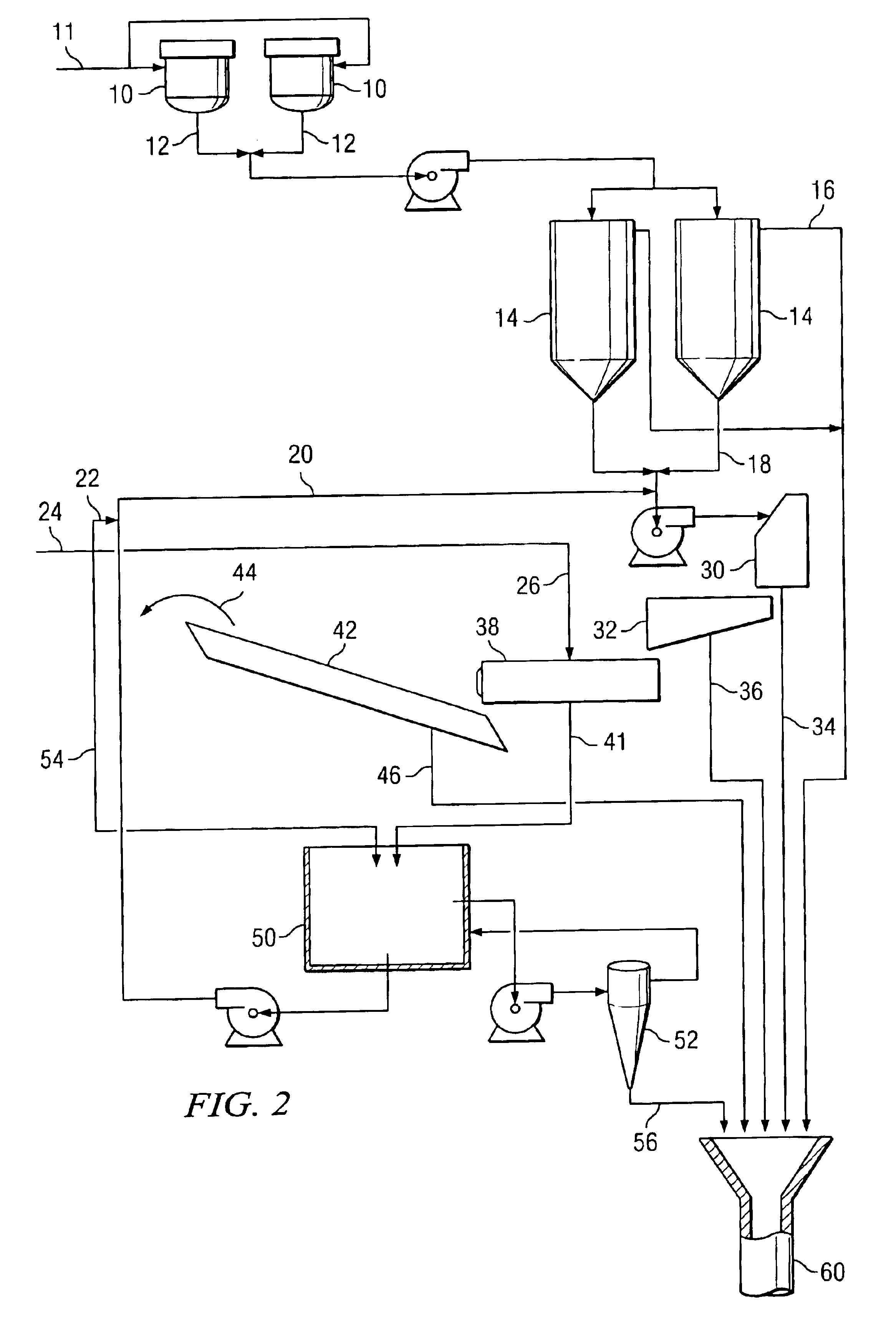Nixtamalization process
a technology of nixtamalization and process, which is applied in the field of nixtamalization process, can solve the problems of large resources, undesirable temperature gradient in the kettle, and partial dissolution of the cuticle and other pericarp layers, so as to reduce the waste of water in the soak tank, less steam, and less time
- Summary
- Abstract
- Description
- Claims
- Application Information
AI Technical Summary
Benefits of technology
Problems solved by technology
Method used
Image
Examples
Embodiment Construction
An embodiment of the innovative invention will now be described with reference to FIG. 2. The same reference numbers are used to identify the same corresponding elements throughout all drawings unless otherwise noted. There are two separate parts to this invention; saving water, wastewater, lime, time and heat in the grain cook and steep process and saving water and wastewater by converting the washer wastewater stream into a recycle stream.
The first part of this invention, relating to saving water, wastewater, lime, time and heat in the grain cook and steep process is novel because it removes substantially only the corn-slurry from the kettle 10, thereby leaving the supernate in the kettle 10 for the next batch of corn. For purposes of this invention, supernate refers to a substantially corn-free alkaline mixture. As indicated previously, after the corn / limewater mixture is cooked, fresh kettle water is added to the kettle 10 to cool the batch. A settling effect occurs causing the ...
PUM
 Login to View More
Login to View More Abstract
Description
Claims
Application Information
 Login to View More
Login to View More - R&D
- Intellectual Property
- Life Sciences
- Materials
- Tech Scout
- Unparalleled Data Quality
- Higher Quality Content
- 60% Fewer Hallucinations
Browse by: Latest US Patents, China's latest patents, Technical Efficacy Thesaurus, Application Domain, Technology Topic, Popular Technical Reports.
© 2025 PatSnap. All rights reserved.Legal|Privacy policy|Modern Slavery Act Transparency Statement|Sitemap|About US| Contact US: help@patsnap.com



